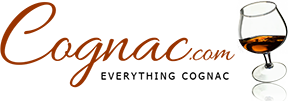The Quintessential French Spirit, Cognac has Strong International Influences
While cognac is thought of as a truly French drink, Cognac’s past and present have been strongly influenced from outside France.
Here are just a few:
Cognac’s History
The area of Cognac, has long been a center of international trade and travel. Dutch, Danish Viking and Scottish traders as far back as the 12th century all visited the area to purchase salt and wine from the Cognac region. Christian pilgrims stayed in Cognac on the way to Santiago de Compostela in Spain.
Cognac’s Distillation Technique
One of the first distilleries in Cognac was set up by Dutchmen in 1624. They distilled the local wine into eau de vie using a process pioneered by their countrymen of mass producing distilled malt wine into Jenever (Gin).
Cognac’s Foreign Grapes
The main grape used in making Cognac is Ugni Blanc, which is the Italian grape Trebbiano. The Trebbiano grape is believed to have been brought to the Cognac region in the 14th century and grows well in the region’s chalky soil.
Cognac’s Foreign Root Stock
In the mid and late 19th century phylloxera struck the vineyards of Cognac and France. The blight was caused by aphids that injected venom into the roots of the grape vines causing them to decompose. Phylloxera resistant grape vine root stock were imported to Cognac from Texas in the United States and grafted on to the local Cognac grape vines, thus saving the Cognac vineyards from further phylloxera damage.
More recently, Catalan vines from Spain have been imported and replanted in Cognac
Cognac Producers’ Foreign Founders
Many of the founders of some of the oldest, largest and most prestigious Cognac house were from outside of France.
Hennessy, the largest Cognac producer today, was founded in 1765 by an Irish immigrant and French Army officer Richard Hennessy.
Martell, a top four Cognac producer was founded in 1715 by Jean Martell, an Englishman born on the island of Jersey, a British dependency off the coast of Normandy France.
Hine, another top rated Cognac house was founded by an Englishman from Dorset, England in the 18th century.
Hardy is a cognac house founded by a Scottish wine and spirits dealer Antony Hardy.
Baron Otard, one of the longest established cognac houses was founded by a Scottish nobleman in 1795. Otard is now owned by Bacardi, a company based in Bermuda.
Meukow was founded in 1862 by Silesians (Silesia is in modern-day Poland) August and Karl Meukow who were working for the Russian Tsar to import cognac to Russia. After visiting the Charete region, the two brothers and decided to stay and open a cognac house with Cognacacais Charles Levoire.
Bache-Gabrielsen was founded by Thomas Bache-Gabrielsen from Holmestrand Norway in 1905.
The House of Braastad also traces its roots back to Norway.
The Cognac Producers’ Foreign Owners
Today most of the major Cognac houses are no longer family owned. Rather, they are owned by French or international conglomerates. While three of the four largest Cognac houses are currently owned by French entities, many of Cognac’s producers are owned or have been owned by foreign interests.
The Big Four Cognac Houses
Hennessy, the largest Cognac house, is owned by French luxury goods conglomerate, LVMH. Moët champagne and Louis Vuitton accessories are also among LVMH’s brands.
Courvoisier, has been owned by British conglomerate Allied Lyons and is currently owned by Beam Suntory, a Japanese company.
Rémy Martin, a Cognac house responsible for the production of 80% of all Fine Champagne Cognac, is owned by Rémy Cointreau, a French entity.
Martell is owned by French company Pernod-Ricard, who purchased the brand from Canadian distiller in 2001.
Cognac’s Foreign Drinkers
The vast majority of Cognac is produced for exports, with less than 5% of the amber elixir consumed in France, and vast amounts exported to China , Great Britain and the United States.

